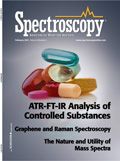Do You Get What You Pay For?
As consumers, we often wonder if it's worth it to spend more for products that purport to be of higher quality. New research published in this issue indicates that in the case of pet food, the answer seems to be no.
As consumers, we often wonder if it's worth it to spend more for products that purport to be of higher quality. New research published in this issue indicates that in the case of pet food, the answer seems to be no.
Atkins and colleagues tested a range of commercial dog and cat food by grinding the samples in a cryogenic freezer mill (dry samples) or blender (wet samples), digesting with concentrated nitric acid, and analyzing the samples for trace-metal content using inductively coupled plasma–mass spectrometry (ICP-MS). They compared the results to reference dose (RfD) values from the US Environmental Protection Agency and tolerable intake (TDI) limits from the World Health Organization — the standards for daily exposures for humans. The results are disturbing.
Many of the pet foods showed significant concentrations of toxic metals, and when the human limits were scaled to the weight of a 50-lb dog or a 10-lb cat, the concentrations exceeded the extrapolated values. For example:
- At least two-thirds of the 18 dry dog foods tested exceeded the EPA and WHO limits for arsenic, cadmium, and nickel; in numerous cases, the concentrations doubled the limits.
- Six dry dog foods greatly exceeded the recommended exposure limits for uranium, and more than half exceeded (and often doubled) the limits for thallium.
- For the dry cat food, all but one exceeded the WHO arsenic limits, in some cases more than doubling them. Six dry cat foods greatly exceeded the nickel limits.
- One dry cat food had an extremely high concentration of cadmium, and another had very high levels of lead and uranium.
But choosing a premium brand, it turns out, does not protect pets from these toxins. The only correlation between contaminant levels and price was the opposite of what we would expect: There seemed to be more arsenic in the expensive brands of dry cat and dog food. Apart from that, no other correlations were seen; some of the products with high levels of contaminants were budget brands, and others had premium prices. If we look at the nine dry dog foods that cost between $0.10 and $0.19 per ounce (compared to others that ranged from $0.01 to $0.07 per ounce), the number that exceeded both the EPA and WHO limits for various contaminants was as follows: arsenic: all nine; cadmium: all nine; mercury: two; nickel: two; mercury: four (three exceeded EPA levels only, and one exceeded both EPA and WHO limits); thallium: five, antimony: two; and uranium: five. Not very reassuring.
The challenge for pet owners, of course, is what to do with this information. Is more regulation in order? Perhaps. But the costs associated with increased regulation could make pet food a lot less affordable for the average pet owner. A better route may be for consumers to start demanding better quality, and better quality control. The formation of an independent quality certification body for pet foods is another path to consider: Brands that want to charge more could allow the body to inspect their processes and products, and pay for the cost through an appropriate fee structure. In the meantime, the simplest answer for concerned pet owners may be to follow the growing trend, and prepare some, or all, of your pet foods at home.

Laura Bush

Laura Bush is the editorial director of LCGC North America and Spectroscopy, lbush@advanstar.com.

AI-Powered SERS Spectroscopy Breakthrough Boosts Safety of Medicinal Food Products
April 16th 2025A new deep learning-enhanced spectroscopic platform—SERSome—developed by researchers in China and Finland, identifies medicinal and edible homologs (MEHs) with 98% accuracy. This innovation could revolutionize safety and quality control in the growing MEH market.
AI-Driven Raman Spectroscopy Paves the Way for Precision Cancer Immunotherapy
April 15th 2025Researchers are using AI-enabled Raman spectroscopy to enhance the development, administration, and response prediction of cancer immunotherapies. This innovative, label-free method provides detailed insights into tumor-immune microenvironments, aiming to optimize personalized immunotherapy and other treatment strategies and improve patient outcomes.